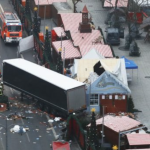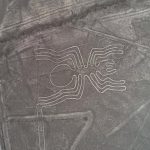The surrealist painter Dauren Makin was sentenced to 7 years in prison for propaganda of jihadist terrorism. With his works, he expressed strong criticism of the authorities in relation to the riots of January 2022 and considers that he is persecuted solely for his opinions.
Astana () – The artist Dauren Makin was sentenced in Astana to seven years in prison on charges of “extremism and terrorist propaganda”. He has declared his intention to appeal the sentence before the Supreme Court, arousing great interest and solidarity in many compatriots. Through the drawings of him, he expressed strong criticism of the authorities in relation to the riots of January 2022. He considers that they persecute him only because of his views and humanitarian activists in Kazakhstan consider him a “political prisoner”.
His art consists of pencil drawings on simple sheets of paper, and they express feelings of despondency and disorientation of the person, obviously imprisoned or locked in a room, in different poses and expressions that reflect the difficult days everyone has lived through in Kazakhstan. In other drawings, the prison bars and furniture can be seen more clearly, with two people looking through the window or men tied up and immobilized.
The ruling says that Makin “posted terrorist propaganda messages on his social media pages, calling for armed jihad, branding public officials as kafiry and infidels, and calling for the violent overthrow of constituted authorities.” The artist’s lawyer, Zasulan Kaumenov, explained that the accusations were based on voice recordings made by security service agents who visited Makin under the guise of “learning to draw”.
The sentence was confirmed in the second instance without taking into account the unreliability of the testimonies collected; but the painter trusts the Supreme Court and “has no intention of giving up,” says the lawyer. On June 28, Makin served 48 years in prison. The indictment says that “in 2010 Makin began to profess the Islamic religion, autonomously resorting to Internet sources on religious canons, and from the analysis of his investigations it can be deduced that he has begun to take an interest in the activities of terrorist organizations international organizations that spread destructive religious ideas. For that reason, he is charged with “participation in the global Islamic terrorist movement.”
These accusations are based on the Facebook messages of January 19, 2022, in which he laments that “they kill us not only with bullets, but above all with terror, which makes us fearful and subject to power, with a self-conscious increasingly fragile and the desire to live far from danger… This is marasmatic surrealism! But these days the people have finally woken up, for the glory of Allah!” In another post he wrote: “I like the words: Maidan, Taliban, Kazakh, Zaporizhia Sich [la sede histórica de los cosacos]Radical, Shal Ket, Tonkaj ket, Shura-Soviet!”, expressions that refer to the freedom of spirit of the Eurasian nomads rather than to the terrorists of the Islamic State.
The so-called “drawing students” sent to keep an eye on him began to frequent him in 2021. A man and a woman introduced themselves as Arystan and Majra, and he naively welcomed them into his home. “He is a man with a big heart,” recalls the lawyer. They encouraged him to talk about Islam and the “fight against the infidels”, and he replied that “every true Muslim must know how to defend himself, even with the use of weapons”. That is why he is accused of inciting armed struggle. The testimony of “Majra” and “Arystan” was carried out without showing the faces of the witnesses, hidden by four screens, and without revealing their real names.
At the appeal trial, the artist’s father, Askarbek Makin, showed other drawings of his son that he has kept since his adolescence, to demonstrate his true nature, “someone who wants to discover the discomfort of the soul, not cause evil himself.” But the judges decided not to take it into account and relied solely on “philological, political, theological and religious history analysis” of his alleged social messages, many of which are obviously contrived. Makin’s drawings speak of the Kazakh people, often portrayed in traditional costumes, and some of them are even on display at the Astana National Museum. The persecution against him is the best demonstration of the efforts of all of Kazakhstan to get rid of the authoritarianism of the past and open new paths for the spirit and society.











